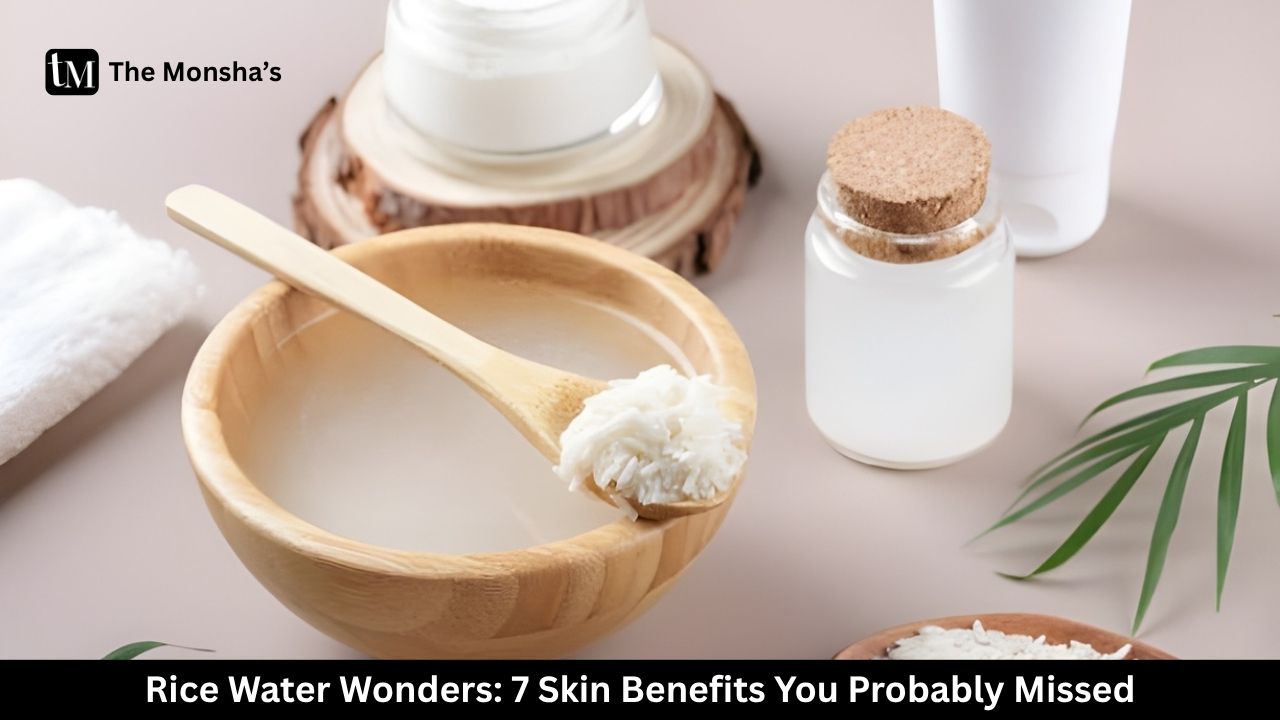
“Chaawal ka paani toh sirf chawal pakane ke kaam aata hai?”Aree nahin, meri jaan. “Pehle chaawal, phir glow ka kamaal” — aur agar chaawal mein bhi glow hai, toh Shaadi.com ka bio update toh banta hai boss. 😌✨
Yes, I’m back again — running low on sleep, high on skincare knowledge, and deeply convinced that your kitchen leftovers (especially that murky rice water) deserve better than your drain. So let’s talk about what happens when that grainy liquid becomes your skincare game-changer.
Rice water = underrated desi glow potion. It hydrates, calms, brightens, and strengthens your skin barrier. Apply it as toner, mask base, or splash after cleansing. Safe for most skin types (with patch test). Cheap, easy, and worth trying 2–3x/week.
It’s literally the leftover starchy water after soaking or boiling rice. But behind that cloudy appearance lies a whole world of skincare potential. Rice water’s been a staple in Korean, Japanese, and even Indian beauty rituals — centuries before it became an Insta or TikTok trend.
What makes it special?
Those starches? They're low-key skin resurfacing agents. Rice water helps loosen up dull skin cells without harsh abrasives.
🧖♀️ Use as: splash toner post-cleansing, or dab with cotton pad.
It’s a humectant — meaning it pulls moisture in. Think of it as your face’s hydration IV drip, but DIY and non-scary.
💦 Pro tip: Store cooled boiled rice water in a spray bottle. Instant facial mist!
Contains ferulic acid — an antioxidant powerhouse — and inositol, which is known to improve elasticity and reduce fine lines.
🎯 Especially good when paired with vitamin C serums or SPF.
Rice water inhibits tyrosinase (an enzyme involved in melanin production). Long story short: it can fade dark spots over time.
⚠️ But remember, "overnight miracle" = marketing myth. Consistency is key.
Sensitive, red, angry skin? Rice water is your new BFF. It cools, calms, and reduces redness — especially when refrigerated.
🧊 "Thoda chaawal, thoda chill."
While it's not a sunscreen, research shows rice-derived compounds help in repairing UV-induced skin barrier damage.
🧴 Combine with a physical sunscreen for best results — don’t replace.
Its amino acids help maintain skin’s natural pH and rebuild the moisture barrier — essential for those with breakouts or over-exfoliated skin.
💡 Works well as a toner under light gel moisturiser.

💡 Fermented = stronger, but test first.
🧴 Use 2–3x a week. Always follow with moisturiser.
Tried it during a heatwave. First time, skin looked instantly plumper. Third time, I fermented it a bit longer and wow — calm, less blotchy, more even skin tone.
But I did mess up once. Left boiled rice water in fridge too long. Let’s just say — don’t use it if it smells like dahi gone wrong 😖
Q: Can rice water replace toner?
A: Yes — especially for hydration and brightening.
Q: Does rice water bleach skin?
A: No. It fades dark spots, but doesn’t bleach.
Q: How long can I store it?
A: 3–4 days max in a clean airtight container in the fridge.
Q: Can I mix it with other ingredients?
A: Yes! Aloe vera, glycerin, rose water work well.
Q: Can oily or acne-prone skin use this?
A: Yes — especially fermented version in diluted form.
Yes, but only if you use it right. It’s not a magical potion, but it’s gentle, accessible, and super versatile. For the glow-on-a-budget crowd, this one’s a must-try.
“Ghar ka chaawal, ghar ki glow — sabse safe combo.”
Skip the ₹1200 “brightening toners” and start with that leftover rice rinse. And if it doesn’t work, you still have biryani options. 😌